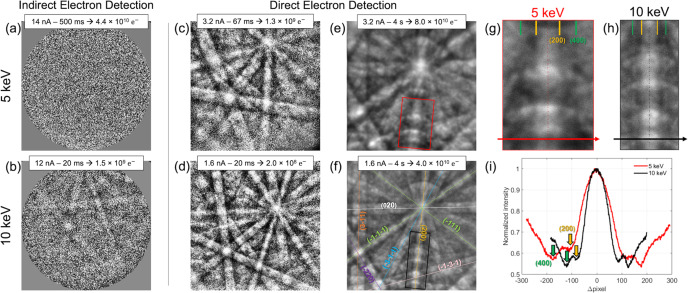Electron backscatter diffraction (EBSD) has been instrumental in analyzing grain orientations in engineering materials, but ceramics with small grains, high crack densities, low symmetries, and beam sensitivities have presented significant challenges. Recent advancements at UC Santa Barbara are redefining what’s possible with EBSD, particularly for ceramics, through a novel workflow that leverages cutting-edge technology.
Using a 4K × 4K pixelated Direct Electron detector and state-of-the-art dictionary indexing, researchers demonstrated remarkable results on challenging materials like micro-cracked monoclinic hafnia and hafnia-based composites. This workflow achieves high-quality diffraction patterns with significantly lower electron doses—up to 32x lower compared to conventional phosphor-based detectors—thereby minimizing beam damage and charging effects. Additionally, the approach resolved pseudo-symmetric indexing errors, a common issue with traditional Hough-based methods.
These breakthroughs highlight the limitations of phosphor-based detection systems, particularly at low accelerating voltages where sensitivity losses are pronounced. By overcoming these challenges, Direct Electron detectors enable advanced characterization of beam-sensitive and low-symmetry materials, paving the way for new discoveries in ceramic analysis.
The paper, published in Ultramicroscopy, underscores the power of interdisciplinary collaboration and technical innovation. It represents a step forward for researchers tackling complex material systems and expands the scope of EBSD applications in ceramics and beyond.

Fig. 4. Hafnia EBSPs from fixed sample locations using indirect and direct electron detectors. (a,b) EBSPs from the TSL/EDAX detector at 5 and 10 keV. (c,d) EBSPs from the DE-SEMCam detector at 5 and 10 keV. Even at lower relative electron doses the DE-SEMCam detector collects higher quality EBSPs than the indirect TSL/EDAX detector. (e,f) EBSPs acquired at longer times reveal fine diffraction details, with enlarged sections (g,h) showing higher-order bands. Flat fielding/background subtraction (computed as the average of all patterns in each map) were applied to all EBSPs. (i) Integrated line profiles extracted from (g,h) across the (200) Kikuchi band.